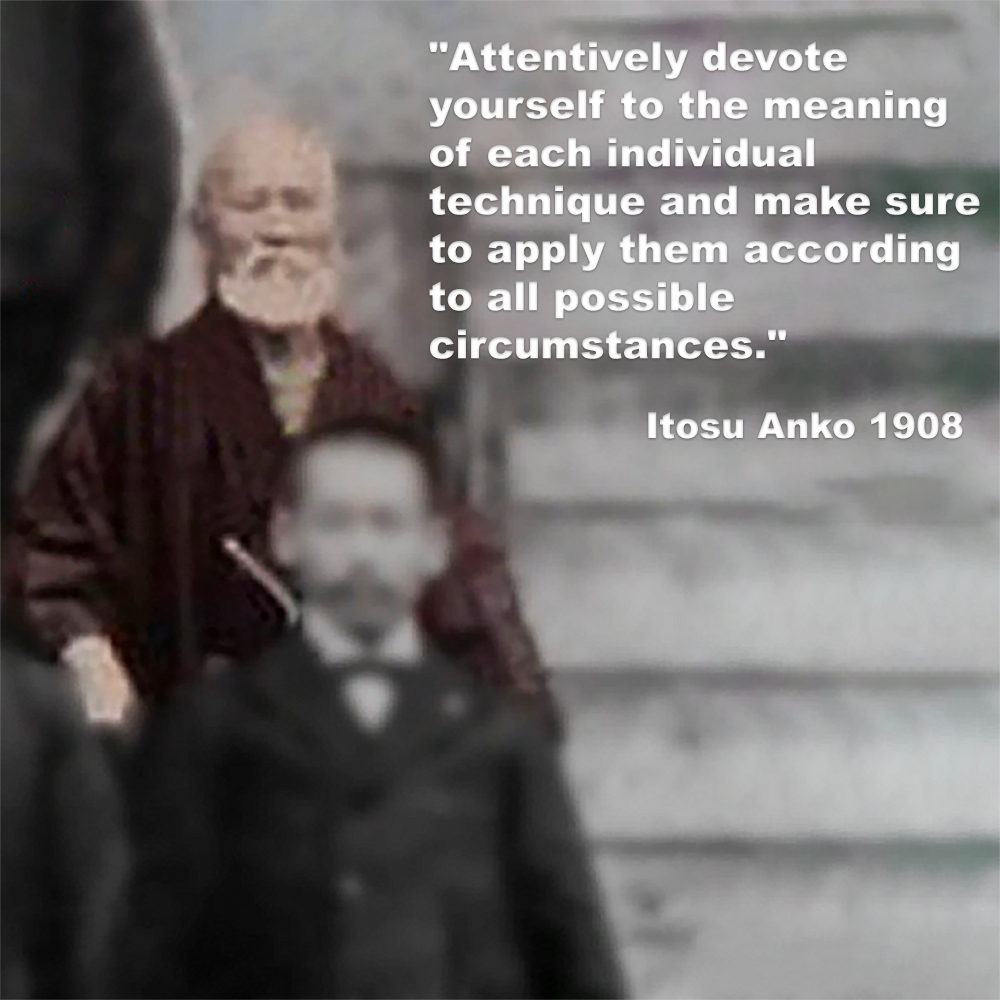
"Attentively devote yourself to the meaning of each individual technique and make sure to apply them according to all possible circumstances." - Itosu Anko 1908
Posted by ADAM CARTER on MAY 23, 2023

"Attentively devote yourself to the meaning of each individual technique and make sure to apply them according to all possible circumstances." - Itosu Anko 1908
Renowned karate master Itosu Anko once wrote; "Attentively devote yourself to the meaning of each individual technique and make sure to apply them according to all possible circumstances."
It’s very important that practitioners discover and understand underlying karate principles. Many movements have more than one function or expression. Although some motions do only have a single use, others can be used in a wide range of ways.
There is a need to follow Itosu's advice and explore all possible uses of a movement and not just the way the technique is ‘named’.
Itosu’s statement highlights the profound significance of understanding the multifaceted nature of martial arts techniques.
By delving into the physical aspects of a technique, its movement, practitioners can gain a comprehensive understanding of its mechanics, angles, and applications.
Itosu's words beckon us to explore, urging us to uncover the hidden layers that lie beneath the surface of a technique or movement.
Techniques by their very nature are not static; they adapt and evolve in response to various situations.
By embracing a breadth of possibilities, practitioners can develop a versatile mindset that enables you to assess and respond effectively to dynamic combat scenarios, not simply karate-ka vs karate-ka attacks.
One size does not fit all; a vital aspect of Itosu's statement lies in acknowledging that techniques are not rigid, fixed entities. They possess inherent adaptability, allowing for customization and tailoring to individual circumstances.
Itosu encourages martial artists to explore various applications of a technique, recognizing that a single movement can yield a plethora of outcomes based on the context in which it is applied. By embracing this concept, practitioners can better adapt their techniques to different opponents, environments, and scenarios, maximizing effectiveness.
Furthermore, delving into the multifaceted interpretation of techniques fosters creativity, analytical thinking, and problem-solving skills. It encourages practitioners to think beyond the conventional and to adapt to different strategies, enhancing ability to outmaneuver opponents.
The key is to understand "why" techniques work, to get beyond the simple explanation of individual techniques, and endeavor to fully understand the principles of combat upon which they are based.
Principles are far more important than techniques. They can be applied in an infinite number of ways, but techniques are very specific and hence limited, and usually only work with a predefined knowledge of an attack.
It's worth noting that techniques and principles are not mutually exclusive but rather interconnected. Techniques are the practical applications of principles, and both aspects are essential in martial arts training. While techniques provide specific tools for combat, principles offer a deeper understanding and guide the effective use of those tools.
Without a solid understanding of these principles, techniques can lack effectiveness. Principles provide the underlying structure and logic behind techniques, enabling practitioners to execute them with precision and efficiency. They allow for a deeper understanding, fostering individual expression and growth.
Many applications are often presented as something "hidden" or "secret". But it is not a mysterious secret knowledge that is the sole reserve of a chosen few. Anyone can understand the "language" of techniques.
Too understand that language, look beyond the nomenclature and study the movement in its entirety, and ask yourself; “will this work, and why?”
![]() Photo Credit: Original image courtesy of Hanshi Patrick McCarthy
Photo Credit: Original image courtesy of Hanshi Patrick McCarthy
